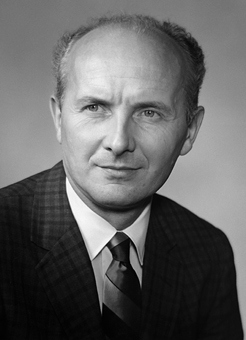
By Josef Rösch
Charles T Dotter was an extraordinary man with a creative, innovative mind and a great capacity for developing new devices, techniques and treatments. He radically changed the treatments of vascular diseases and became the father of interventional radiology.
I also found that Charles was a persuasive teacher and became a close friend. When Charles invited me in 1967 for a one-year fellowship in his radiology department, I was an experienced diagnostic radiologist. He changed my mind to begin thinking about intervening. On the first day in Portland, Charles prepared two patients for percutaneous transluminal angioplasty of arterial leg obstructions. Both went well, and in this fashion Charles began his initiation of my “interventional” thinking. He started with the need to consider catheters as therapeutic tools and to think about treatment during my diagnostic procedures. Watching Charles performing percutaneous transluminal angioplasty for one year and thinking about treatments, I became an interventionalist.
My first interventional breakthrough came in 1968–69 when I was a visiting professor in the diagnostic radiology department at University of California, Los Angeles, USA, where Bill Hanafee was chairman. Occasional punctures of intrahepatic portal branches during diagnostic transjugular cholangiography that, at that time, we used for diagnosis of obstructive jaundice led first to a new diagnostic portal venography technique and finally to the transjugular intrahepatic portosystemic shunt. Treatment of acute arterial gastrointestinal bleeding first by vasoconstrictive infusions and later by selective arterial embolization reinforced my interventional mindset. Thus, Charles taught me to be an interventionalist.
Charles was sometimes forceful and even abrasive in public, particularly to residents. To me, he was kind, gentle and a real friend. Our friendship started the first day when he asked me to call him Charles, the same as his family did. Our friendship continued during our frequent trips on weekends hiking and enjoying outdoors in Oregon and Washington. In the summers, we spent two to three weeks travelling to the high mountains of Colorado or California and climbing over 14,000 feet. I climbed 18 of them with Charles. We had an excellent time and always returned refreshed for our interventional work.
Josef Rösch is an award-winning researcher and pioneer in vascular and interventional radiology. Rösch was the first director of the Dotter Interventional Institute and served until 1995. He is credited with developing the transjugular intrahepatic portosystemic shunt (TIPS) procedure in 1969 and the incorporation of embolization into the treatment of gastrointestinal bleeding in 1971













